Hybrid vehicles have always gotten the short end of the stick. During the nascent period, they were generally given a wide berth by those fed on a diet of regular petrol machines, who viewed the inclusion of a battery – and accompanying electric ware – with mistrust.
Now, just as the latter isn’t such a large an issue any more, in comes derision, by way of the everything-must-be-spanking clean full-electric crowd. After all, if you’re going to go clean and efficient, BEVs must surely be the way to go.
Well, not quite, not yet completely at least anyway. There’s still place for what is essentially middle ground, pinched as it may be. In less evolved markets, it’s probably the best interim solution in providing fuel efficient motoring and reducing emissions. In more sophisticated ones, the tech can serve as a neat bridging measure to those wanting to trial out electrification but remain trepid in going the whole way, providing the comfort of fossil fuel – and zero range anxiety – to fall back on.
Based on this reasoning, quite a few automakers are continuing with such an approach, Honda included, even as they slowly make their way into going green in full fashion. For the Japanese automaker, the hybrid remains pertinent, as shown by the aggressive push of the format as range-toppers in its model line-ups in the region.
Locally, the City sedan and hatchback paved the way for e:HEV, as the automaker badges its tech, and the latest to join the party is the hybridised version of the Civic, which made its official debut last November. We’ve seen what the Civic e:HEV’s speed abilities are in a straight-line and on the track, but what’s it like to drive out on the road? Cue a drive session down south and back to answer that question.
Same presentation, by and large
First, a spec recap of the hybrid, which is available in a sole RS variant form. That suffix means that the exterior styling treatment is similar to the turbocharged RS, with a few tweaks to give the car its own flavour.
They’re not very discernible, the differences, with the 18-inch twin-style five-spoke (or 10-spoke, in dual tone) units it wears providing the fastest means to identify the car from the side and quarters, while a single tailpipe finisher provides the primary visual cue from the rear.
Look closer and you’ll notice the smaller differentiation elements, these being blue accents on the Honda logos as well as an e:HEV emblem at the rear as well as additional chrome trim, found on the front grille, headlight inner bezel and window line inserts.
Move inside and it’s the same story, with the only difference in presentation being the inclusion of a 10.25-inch full digital instrument display, dual-zone air-conditioning, a Qi wireless charger and a Honda smart key card, which are not found on the E, V and RS petrol versions.
Otherwise, the Civic e:HEV features kit identical to the petrol RS, such as a black interior, rear AC vents, a 9.0-inch touchscreen Advanced Display Audio infotainment system with wireless Apple CarPlay support as well as Remote Engine Start. Likewise, the cabin layout, the presentation of which is decidedly quite a few notches up from the 10th gen FC’s.
A look at the tech
The Civic e:HEV gets the most powerful version of Honda’s Intelligent Multi-Mode Drive (i-MMD) system, which combines the workings of an electric motor and petrol engine. The latter is a 2.0 litre naturally-aspirated Atkinson-cycle four-cylinder engine, which acts primarily as a generator and juices a 72-cell battery (with a capacity of 1.05 kWh) incorporated in the Intelligent Power Unit (IPU).
While similar in displacement to the unit in the Accord Hybrid, the engine is new, and features direct-injection, with tweaks resulting in the unit having a thermal efficiency of 41%, which the company says is one of the highest on a production vehicle. The new DI mill offers 143 PS (141 hp) at 6,000 rpm and 189 Nm of torque, marginally higher than that of the Thailand-spec version (141 PS and 182 Nm) due to our better fuel quality.
An electric motor handles most of the propulsion duties, although the engine can provide direct drive – via a lock-up clutch – at higher speeds for better efficiency. The e-motor, which offers 184 PS (181 hp, or 135 kW) and 315 Nm from 0-2,000 rpm in the way of output, sends drive to the front wheels via an electric continuously variable transmission (E-CVT).
The incorporation of hybrid components means that it is heavier than the Turbo – at 1,445 kg, the Civic e:HEV has around 100 kg more ballast than the heaviest petrol version, the V, which weighs in at 1,349 kg.
Despite the additional weight, the hybrid is a faster car. Performance figures include a 0-100 km/h sprint time of 7.9 seconds and a fuel consumption of 4.0 litres per 100 km, both an improvement over the petrol RS’ 8.5 seconds and 6.3 litres/100 km. Top speed is identical to the turbo at 200 km/h.
The virtues of “electrification”
Evidence of that pace off the block was shown in real-world conditions last year, when the car was previewed in Sepang ahead of its official launch. On track, the hybrid clearly aced the turbo – which isn’t exactly a slouch – in both the day’s sprint test exercises, which was a full acceleration run from a rolling start at 60 km/h from the pit lane exit and a drag race from standstill to 100 km/h, the last by more than a car length.
That willing-to-go nature continued on the road, although less noticeably when viewed in isolation and at up to intermediate speeds. It’s only when you floor it that the e:HEV feels that bit more immediate in its response to throttle compared to the turbo, its movement up the speed range that bit more snappier.
Of course, unless you’re the lead-footed sort, that really isn’t the point of why you would go with a hybrid, and so the real draw is how it drives on the whole and how fuel efficient it is over the course of its service life.
For the first, the hybrid behaves no differently than the regular Civic in straight-line coasting conditions – it rides in similar fashion as the turbo, the presentation again coming across as very Continental in its depiction. Likewise, occupant comfort levels – we ended up being in the car for more than 18 hours over the two-day drive, and the front seats in particular were ace.
In terms of handling, the hybrid is ahead. This was briefly suggested during the Sepang session, where it felt tauter in the corners (and at higher speeds), and reinforced during the road drive, especially perceivable at speed on windier B-road sections such as that presented during the Kluang to Desaru section of the drive. Here, the hybrid felt better composed in how it tracked and placed.
In this regard, the extra weight is imperceptible, cleverly masked by being distributed in 50:50 fashion across the platform and also through revised spring and damper rates to ensure that the Civic’s handling aspects and dynamics are preserved. The 10 mm lower centre of gravity probably helps the cause too.
The retention of the general character from the turbo also means that everything else alongside it also comes along, for better or worse. While vibration and harshness levels are nicely tempered, noise (tyre/wind) is still an area that can be worked on, especially evident at higher speeds.
Of course, the real meat is with fuel consumption, which is why one would want a car like this in the first place. Unsurprisingly, the returns are naturally better than that of the stand-alone turbocharged petrol unit. Under the most extreme of operating conditions, the fuel economy can best be described as staggering.
For the drive to Johor, Honda Malaysia chose to include a fuel test challenge from the KL start point to Kluang (which ended in Melaka due to that which happened below). Cobble together an eco-challenge with the motoring press in five cars and you get an idea of where this is heading – think AC switched off, windows completely up for the most and even side mirrors folded in as well as drafting lorries to get assist, all at speeds of 80-90 km/h, and it’s a recipe for unreal FC numbers.
The winning car ended up with a more than 31 km per litre result, and the two other top three finishers weren’t far behind, all with figures that no one in their right mind should attempt to replicate. Our car was the only one that kept the AC on (and at 20 degrees C, mind you) and driven in normal fashion, within the convoy’s speed limits.
As such, it represents the kind of figure you can possibly achieve should you be a relatively sane eco-warrior, in this case a low 26.8 km per litre. Which unsurprisingly placed us dead last out of the five cars. Even more realistically, this fell to 18.6 km per litre over the entire course of the drive, which covered more than 900 km in all and contained a mix of urban and intra-urban movement, with no regard for saving fuel in general.
To hybrid, or not?
That the Civic e:HEV is a capable car is without doubt. It’s faster off the line and in gear than the turbo, rides as well and handles better at higher speeds on tighter, twistier roads despite carrying more weight. It’s also more economical from a fuel consumption viewpoint, and you get a bit more goodies compared to the regular turbo FE.
Unfortunately, it all comes at a price, in this case to the tune of an additional RM16k compared to the petrol RS. At RM166,500 (on-the-road, without insurance), the hybrid isn’t cheap, not when you can get your hands on the turbo RS for RM150,700, itself already a bit of an ask if you look at the previous-gen equivalent. However, if you have your eyes focused on a Civic and can stretch it, you’d do well to examine the e:HEV, because it is the pick of the civilian FE range here.
Looking to sell your car? Sell it with Carro.

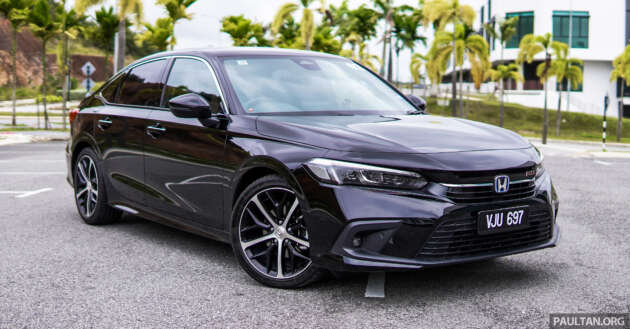
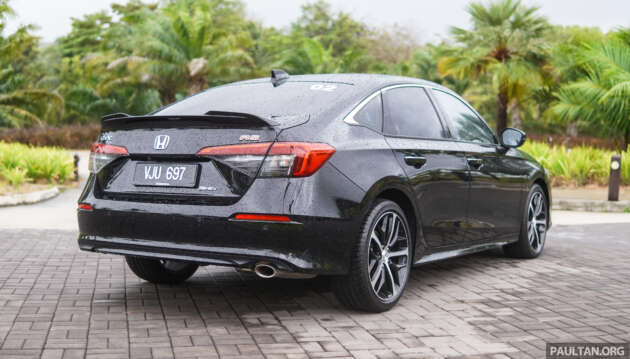











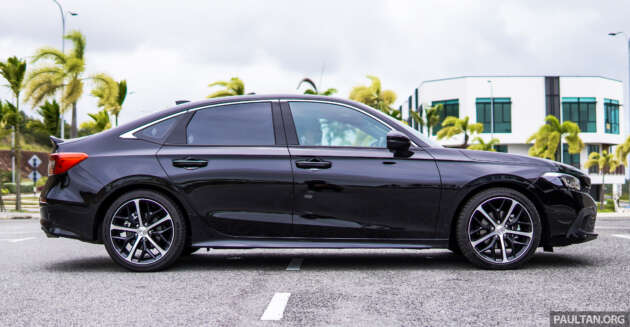
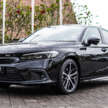

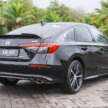

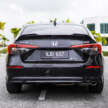
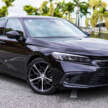
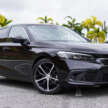
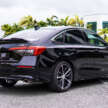
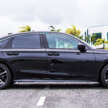




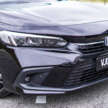


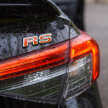
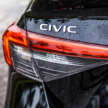
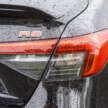
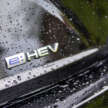
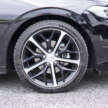
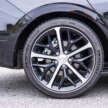

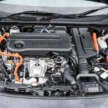
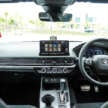
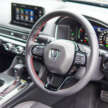
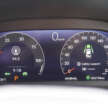
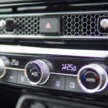
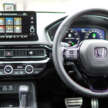
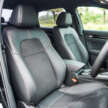
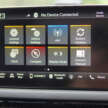
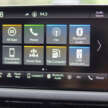
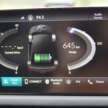
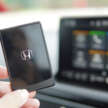
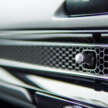
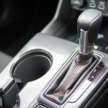
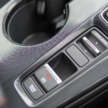
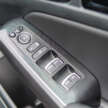
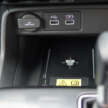
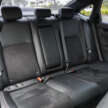
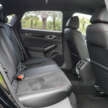
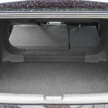
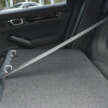
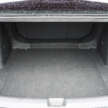
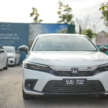



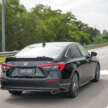
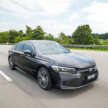
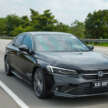

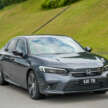
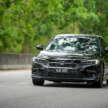
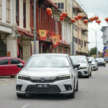


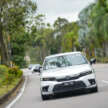

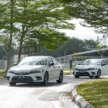


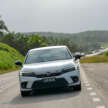


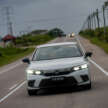
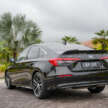

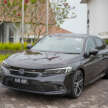


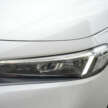

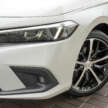
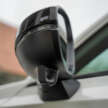






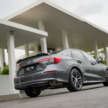
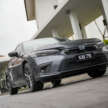
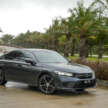
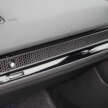
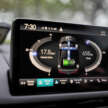
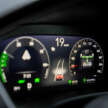
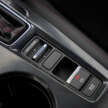
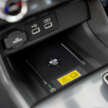
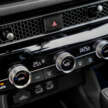
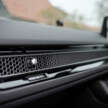
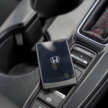
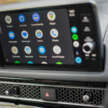

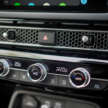


















So much want. Perfect complement to the wife’s X-Trail Hybrid.
It’s objectively good except for the price. It’s too big an ask especially since the regular petrol version is so capable, and how RV-sensitive Malaysians are. Good in a vacuum, but not so much in the real world.
My dream car.
reverse camera from 2005, no blidn spot monitor, gila harga, sub par assembly melaka quality,,,next
B40’s favourite
Main question is how much is the battery replacement cost and how long can it last 6,7,8 years?? this will affect it resale value….IMHO, the turbo is a better buy, cheaper & resale value is better when its time to move on.
Anyway, can anybody enlighten me on the battery cost replacement? thank you